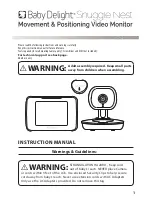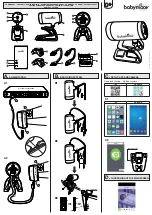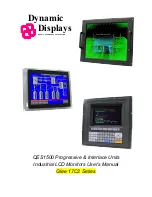
78
Terminology
OSD (On Screen Display)
____ On
screen display (OSD) allows you to
customize on-screen settings to
optimize the picture quality as required.
You can change the screen brightness,
tint, size and many other settings using
menus displayed on the screen.
Gamma
____ The Gamma menu adjusts
the grey scale that represents middle
tones on the screen. Adjusting the
brightness brightens the whole screen,
but adjusting Gamma only brightens
the medium brightness.
Grey scale
____ Scale refers to levels
of colour intensity that show variations
of colour change from darker areas to
brighter areas on the screen. Changes
to the screen brightness are expressed
with black and white variation, and
grey scale refers to the medium area
between black and white. Changing the
grey scale through Gamma adjustment
will change the medium brightness on
the screen.
Scanning rate
____ Scanning rate, or
refresh rate, refers to the frequency
of screen refreshes. Screen data is
transmitted as it refreshes to display
an image, although the refreshing is
invisible to the naked eye. The number
of screen refreshes is called scanning
rate and is measured in Hz. A scanning
rate of 60Hz means that the screen
refreshes 60 times per second. The
screen scanning rate depends on the
performance of the graphics cards in
your PC and monitor.
Dot Pitch
____ The product and screen
consist of red, green and blue dots.
A shorter distance between the dots
produces a higher resolution. Dot pitch
refers to the distance between the
shortest distance between dots of the
same colour. Dot pitch is measured in
millimeters.
Horizontal Frequency
____ Characters
or images displayed on the monitor
screen consist of numerous dots (pixels).
Pixels are transmitted in horizontal
lines, which are then arranged vertically
to create an image. The horizontal
frequency is measured in kHz and
represents how many times horizontal
lines per second are transmitted and
displayed on the monitor screen. A
horizontal frequency of 85 means that
the horizontal lines that make up an
image are transmitted 85000 times per
second. The horizontal frequency is
indicated in 85kHz.
Vertical Frequency
____ One image is
made of numerous horizontal lines. The
vertical frequency is measured in Hz and
represents how many images can be
created per second by those horizontal
lines. A vertical frequency of 60 means
that an image is transmitted 60 times
per second. The vertical frequency is
also called "refresh rate" and affects
screen flicker.
Resolution
____ Resolution is the
number of horizontal pixels and vertical
pixels that form a screen. It represents
the level of display detail. A higher
resolution displays a greater amount
of information on the screen and is
suitable for performing multiple tasks at
the same time.
E.g. A resolution of 1920 x 1080 consists
of 1920 horizontal pixels (horizontal
resolution) and 1080 vertical lines
(vertical resolution).
Plug & Play
____ The Plug & Play
feature allows the automatic exchange
of information between a monitor and
PC to produce an optimum display
environment.
The monitor uses VESA DDC
(international standard) to execute Plug
& Play.

































